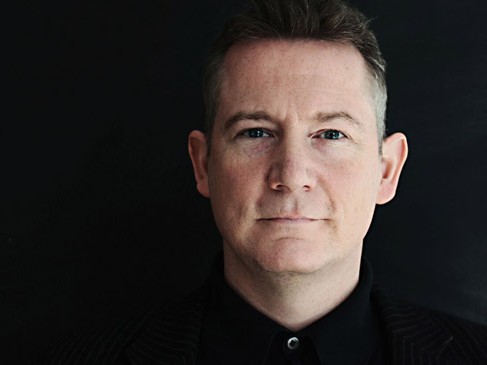Industry Talk - Free Talk
An Anatomy of Failure and How to Benefit From It - Part 1 -
by Peter Corijn
May 29, 2019
.jpg) Advertisement
AdvertisementIn LinkedIn posts, we are often encouraged to learn from failure. But how?
It’s easier said than done. All too often, when things go awry, the first question is “who’s wrong?” rather than “what’s wrong?” Little wonder then that employees hide bad news or excel in putting a positive spin on things. In one major multinational, top managers report “negative growth” but never a “loss”.
Part 1 of this article will focus on the “what”. This does not mean that identifying the “who” is without merit. Those in charge must be held accountable. Leadership makes a difference.
It’s just that only asking the whodunnit question does not lead to sufficient in-depth understanding. It creates the wrong culture.
Failure does have to be qualified: it only has worth if it generates learning and does so at an acceptable cost. A mess created by sheer stupidity has little value. Also, it’s not very useful if obtained at the price of bankruptcy. Napoléon learned quite a bit from his misadventure in Russia in 1812. Alas, his army was destroyed.
Issues can be attributed to 3 core areas: (1) failure to anticipate, (2) to learn or (3) to adapt.
Failure to anticipate is about a vision of the future. Learning relates to the past. Adaptation
to the present. When all 3 are in play, disaster follows. Napoléon did not anticipate the harshness of the Russian winter and underestimated the strategic depth of the country. He did not learn from the past either. Earlier, the Swedish king Charles XII had ended up badly in Russia against Peter the Great (at Poltava). There was a lack of adaptation. When allied Polish cavalry officers started to put special horseshoes on their mounts to provide stability on icy ground, it was dismissed as a quirk. Precious food was substituted for loot in the baggage train during the retreat. What tools are available?
1. Anticipating the Future:
Yogi Berra famously remarked that it’s hard to make predictions, especially about the future.
None of us have a crystal ball. Yet, there are ways to better manage what lies ahead.
a. Near Misses: those are usually covered up with a sigh of relief. But a near miss indicates a major weakness where an issue was averted by the smallest of margins or by dumb luck. It’s an accident waiting to happen. Create a culture where they are reported and acted upon.
b. Pre-Mortem. Here one asks the question before an initiative as follows: “imagine we failed, why would that have happened?” Perhaps because the competitive reaction was underestimated. The plan is then re-evaluated against these concerns.
A crucially important point: if you are always the devil’s advocate, you’ll be sidelined pretty quickly as a “non-believer”, “a negative person”, whether you are right or not. Therefore, make challenge part of the process, not any individual’s role.
Israel has the “10th man”. When a crucial decision is to be made and all agree, the 10th person must take an alternative view and argue it. Not because he or she is “difficult” but as a way to test the solidity of the decision.
c. Contingency Planning with Whatifs. There are many possible futures. There’s an optimistic one. But equally things could take a turn for the worse. That’s why we have fire insurance. If nothing happens, a lot of expensive premiums were needlessly paid. But it could have turned out differently. Always make a plan for a less fortunate outcome.
Have a strategic reserve. Even a military genius like Caesar always kept one at hand. His legions also always built a protective camp in case they had to retreat. You just never know.
An interesting question I once received: “in our company culture, all try to look supersmart. If I allow Whatifs to be discussed, meetings will go on forever and nothing will ever get done”.
This gets managed by setting the following rules:
(i) Prediction must lead to preparation. If not, it is just intellectualising.
(ii) Only predictions that pass the RICE test, are prepared for.
Reliability: what is the possibility and the probability?
Importance of impact of the Whatif.
Cost of the preparation.
Effectiveness of the preparation.
(iii) Limit the Whatifs to 3 to 5.
d. “Test a little, spend a little, learn a lot”. This was one of the mantras of Durk Jager, ex-CEO of P&G. It’s wise to constantly have a roster of small tests - on-going - to evaluate possible future options. It’s certainly better to put a small learning test out there versus an endless yes/no debate in the office.
2. Learning From the Past:
a. Have candid after-action reviews. Again, make it part of the process. Ensure that not only the good is mentioned but also what could have been done better. Capture the learnings and make sure to communicate them broadly to the organization, if only to avoid similar mistakes in the future.
b. Run “what’s hot, what’s not” sessions where each executive needs to highlight one positive learning and one based on failure. It’s not easy to do.
Before you know it, the failure is really a sign of leadership genius. A bit like when one asks a candidate for his or her weak spots: “I’m a go getter who never stops before reaching success; no matter what the obstacles are. Perhaps that make me a bit demanding on occasion?”
3. Adapting to the Present:
LEAN is usually associated with manufacturing process. But the principles are just as valid in other business areas. Suffice to name three:
a. Go and See. Nothing beats first-hand experience. In homes, storechecks, meetings with customers and employees.
For instance, organize a weekly pizza lunch with 5 employees. Anybody can join based on the following rules: (i) provide honest and direct feedback on what to start / stop / continue, (ii) everything they say is off the record, (iii) everything you say is on the
record. Close the office for a day and demand that all employees spend the day in the trade or with consumers.
b. Respect the frontline. Those who are in touch with the reality of the marketplace deserve respect. Their experience and ideas are often very valuable. Also, give enough freedom to those employees. In some categories (like Laundry), it is a “game of inches”. Local ideas and tactics can hence make a difference.
c. Always challenge. Never be complacent. There is always a better way. Remember that competition has a vote as well. They will use all their brainpower and budgets to neutralise your efforts.
One option: let outsiders do the challenge. For instance, use an outside agency to penetrate your security. Ex-Special Forces were asked to get into an office building without raising any alarm. The next morning, we found a little “hi” note on our desks. Some would dumpster dive and come up with confidential documents. This effort
allowed to close gaps in security.
One last thing: do not forget that we can also learn from …. SUCCESS!

Peter Corijn is the CEO and Founder of consultancy firm VUCASTAR. He is also a sought after keynote speaker and a true VUCA and Leadership expert. He is a former Senior Executive with major international experience. Until mid 2017, he was in the C-Suite of Imperial Brands (“IBG” - a FTSE top 20 Company) as Chairman of the Operating Committee, Global CMO and President of several Divisions. He was also Chairman of the Supervisory Board of Fontem, an IBG start-up (“Blu”). In 2017/18, he was Senior Advisor with McKinsey.
Prior, he was Vice President at P&G, where he has held several CEO roles. His last assignment was as Vice President Shave Care (Gillette) for the CEEMEA region. Peter has worked around the world and has lived in London, Bristol, Geneva, Casablanca, Jeddah, Warsaw and Brussels.



.jpg)










